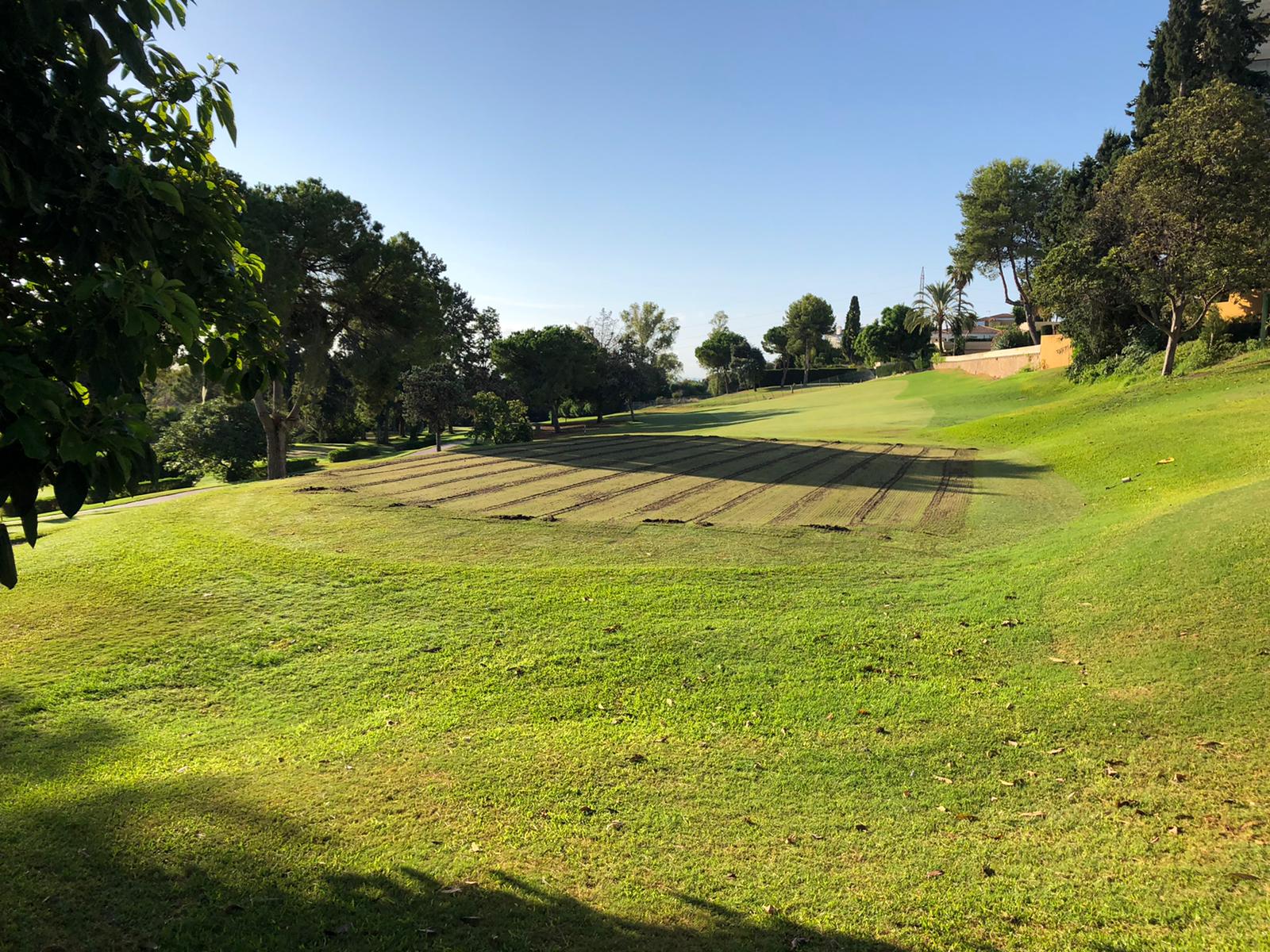Atalaya’s Old Course will be closed from the 1st of September through the 6th of September for hollow tining. During this period the New Course will be open to both members and green fee guests.
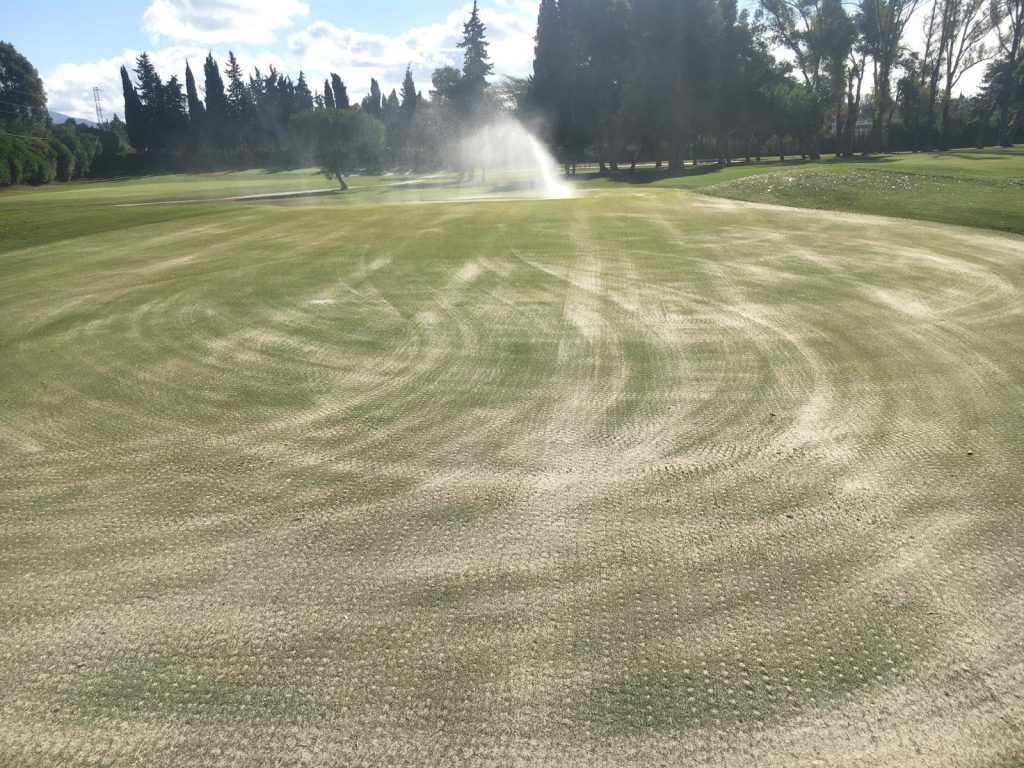
Greens hollow tinned of the Old Course 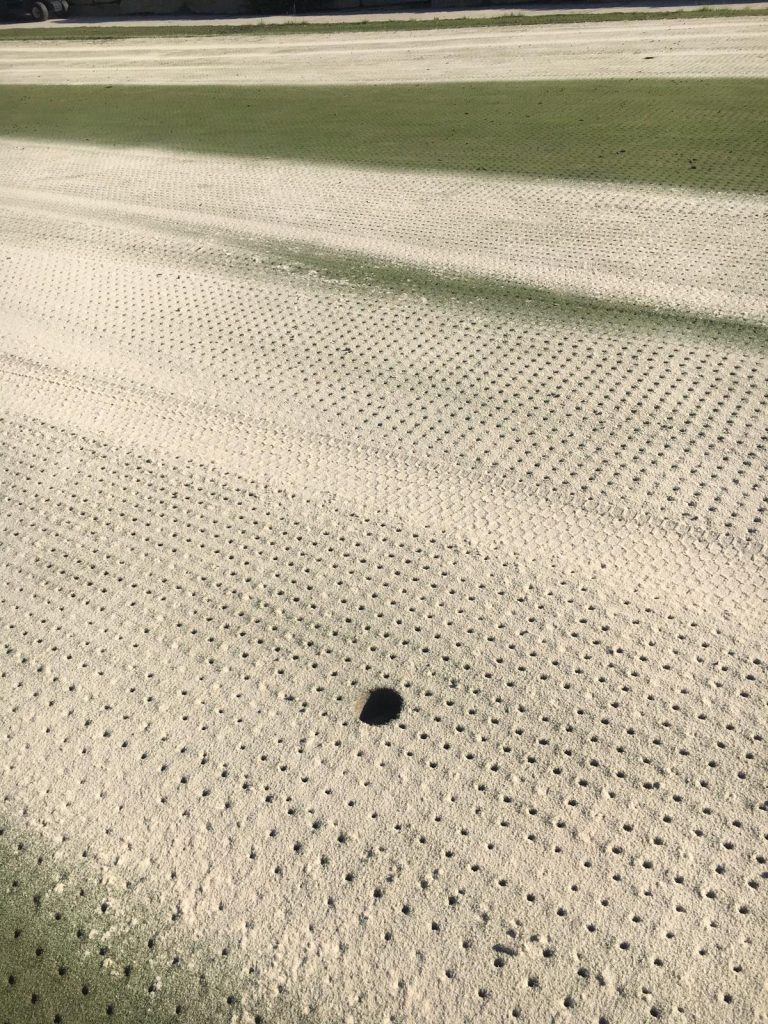
Puttingreen Academy 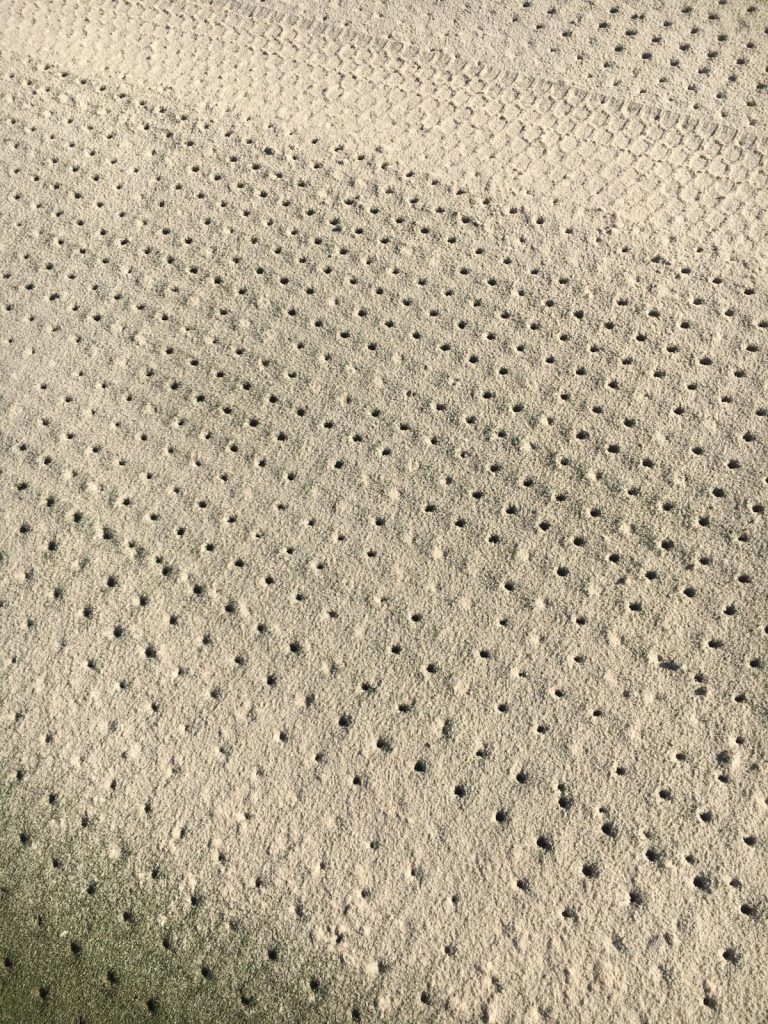
Chipping green Academy 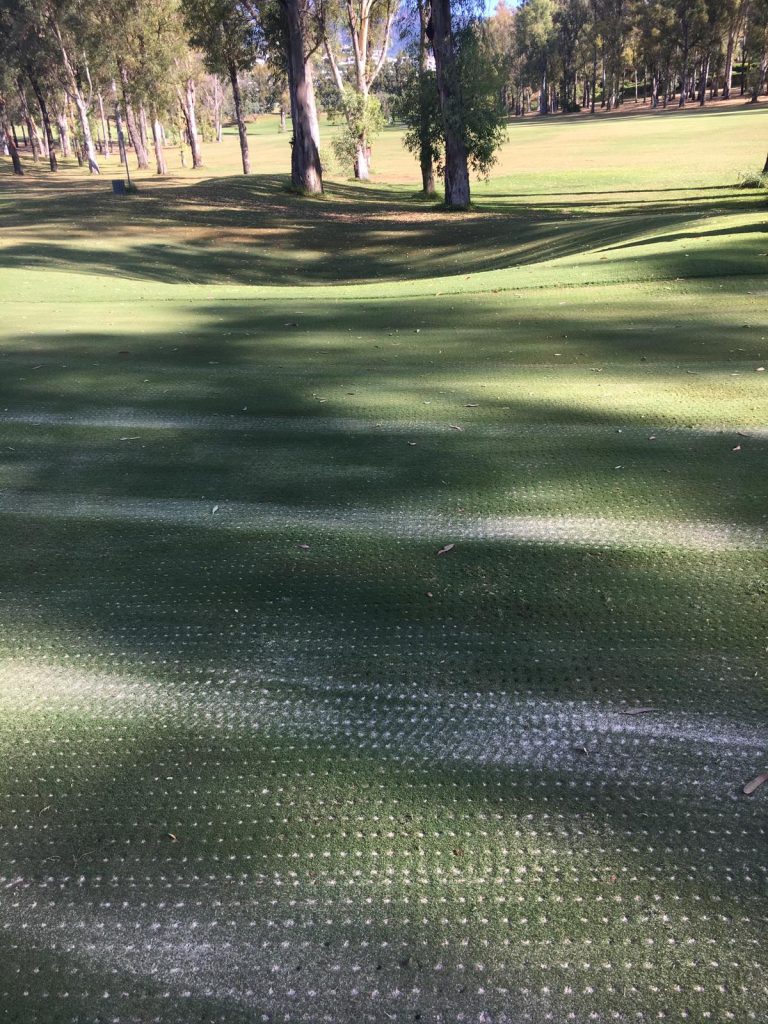
Green practice hole
The hollow tining process involves coring to a depth of 75 – 100 mm by using a vertically operated coring machine. Tines in the largest diameter are used to better prepare the greens for the top-dressing process that follows.
The cores of soil that are left on the surface of the greens after hollow tining are picked up by our greens’ staff and then recycled to fill in bare spots in other areas of the course.
After hollow tining a vehicle is used to work a top soil mixture into the greens. This top-dressing consists of a mix of sand, fertiliser, seeds and gypsum. This dressing reacts with the sodium in the water to create the proper pH balance of the soil and results in the creation of optimal growing conditions. After the top soil is applied, the greens are regularly irrigated to initiate the forthcoming germination process as soon as possible.
Hollow tining and topdressing prepare the greens perfectly for the intense play they experience. Water loss is reduced. Greens are effectively aerated, and compaction is reduced to provide a receptive green for approach shots and an excellent putting surface.
Normally greens totally recover and are ready for play seven days after the hollow tining process is complete.
We at Atalaya Golf & Country Club, even with the current constraints of having our maintenance staff reduced by 2/3rds as a result of the COVID-19 pandemic, work daily to keep our facilities in the best condition possible.

